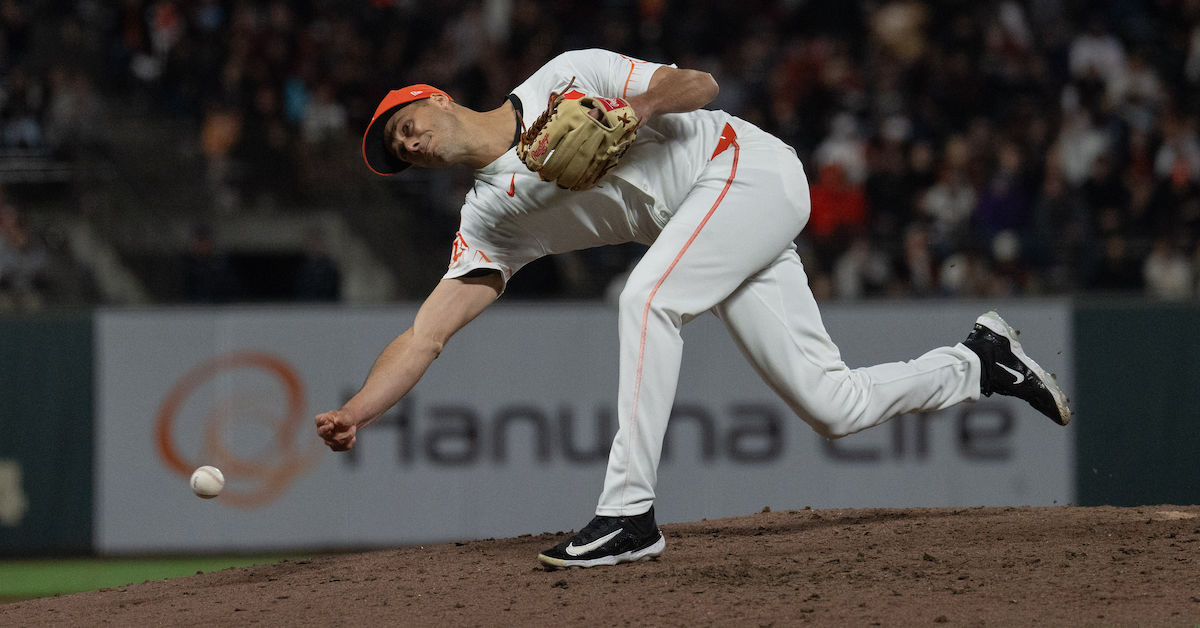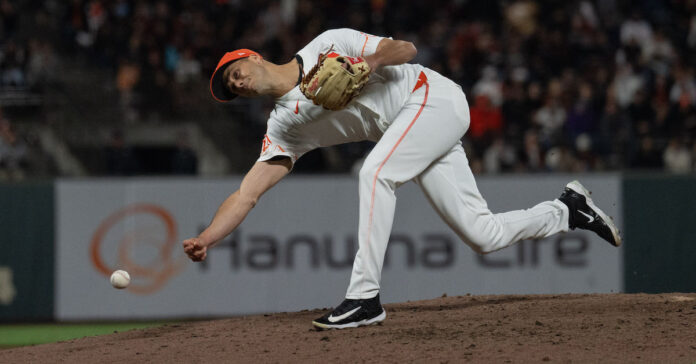
Early final yr, I wrote two articles exploring the handful of pitchers who determined that, relying on the handedness of the batter they have been dealing with, they need to change not simply their pitch combine however one thing extra basic about themselves as pitchers. Some drastically lowered their arm angle towards same-handed batters, whereas some scooched from one aspect of the rubber to the opposite. I principally wrote about these pitchers as a result of they have been enjoyable to look at, however I additionally dived into the reasoning behind their selections. It wasn’t laborious to know what they have been pondering: All issues being equal, throwing from a decrease arm angle works higher towards same-handed batters, whereas a better arm angle works higher towards opposite-handed hitters. I even had numbers to again it up. I ran correlation coefficients between the pitcher’s wOBA allowed and their launch level, and I used common velocity as a form of management variable.
Correlation Between Launch Level and wOBA
| Handedness | Velocity | Horizontal Launch Level | Vertical Launch Level |
|---|---|---|---|
| Similar Facet | -.15 | -.11 | .15 |
| Reverse Facet | -.22 | .13 | -.01 |
Minimal 800 pitches towards related aspect.
The correlation coefficients on this desk are fairly small, however they point out that when the pitcher has the platoon benefit, vertical launch level issues an entire lot. In truth, in that pattern, it has the identical correlation to success as velocity, which is unquestionably a shock. When the batter has the platoon benefit, vertical launch level doesn’t have any bearing on their success, however horizontal launch level does. That’s why some pitchers scooch all the best way over to the alternative aspect of the rubber.
Now that you simply’re all caught up, it’s time to deal with the large flaw in these numbers. The issue with my knowledge was that I wasn’t truly utilizing the pitcher’s arm angle. I used to be utilizing their launch level – actually the spot within the air above the mound the place the ball leaves their hand – as a stand-in.
Right here’s what I wrote on the time:
Thus far, I’ve been utilizing vertical launch level as a proxy for arm angle, but it surely’s not that straightforward. Variations in top, wingspan, and mechanics imply that the equivalence between the 2 is imperfect. You possibly can reverse engineer arm angle from PITCHf/x or Statcast knowledge, however that can solely offer you an estimate. I think about Statcast is able to monitoring arm angle. If that knowledge ever turns into accessible to the general public, I feel it’d considerably change our understanding of the platoon benefit.
As it’s possible you’ll know, Statcast not too long ago made arm angle knowledge accessible to the general public. Are you able to have your understanding of the platoon benefit considerably modified? Nicely that’s too dangerous, as a result of the outcomes aren’t significantly stunning. Nonetheless, we are able to nonetheless glean a couple of fascinating information. To start with, let’s replace our desk by including in arm angle. As a result of the info solely goes again to 2020, the pattern measurement is a bit smaller, which in flip makes the correlation coefficients smaller.
Correlation Between Launch Level and wOBA
| Handedness | Velocity | Horizontal Launch Level | Vertical Launch Level | Arm Angle |
|---|---|---|---|---|
| Similar Facet | -.18 | -.09 | .10 | .13 |
| Reverse Facet | -.23 | .12 | -.06 | -.11 |
SOURCE: Statcast
Minimal 800 pitches towards related aspect.
Regardless of the smaller pattern measurement, it’s reassuring to see that the developments are holding. Let’s begin with same-sided hitters. The next launch level, and one which’s nearer to the middle of the rubber, works higher towards them. The brand new column tells us that towards same-sided batters, when the pitcher has the platoon benefit, the precise arm angle is rather more essential than launch level, which is what we might have been anticipated. Slicing out these confounding variables makes it clear that we don’t want to make use of launch level as a proxy anymore; arm angle is what issues.
Now let’s flip to opposite-handed batters. When the batter has the platoon benefit, I used to be actually shocked to search out that horizontal launch level had a barely stronger correlation to wOBA than arm angle did. As soon as once more, these are extraordinarily small numbers, so we shouldn’t learn an excessive amount of into any of this, however in the event you wished to, you possibly can take this as proof that the pitchers who scooch all the best way over on the rubber towards opposite-handed batters actually do have the best concept. I attempted working a pair regression analyses to see whether or not combining horizontal launch level and arm angle resulted in a fair stronger correlation, however that wasn’t the case. I believe that horizontal launch level simply seems to be a extremely good proxy for arm angle, and that it’d even be factoring within the pitcher’s extension. I’d by no means ever discourage a pitcher from scooching over on the mound all sport, however I’m unhappy to report that I not consider it might be that useful.
I’d additionally prefer to carry up one curiosity. Once I ran the numbers this time round I checked each wOBA and xwOBA, simply out of curiosity. Towards opposite-handed batters, the numbers weren’t significantly notable. Nonetheless, one thing fascinating occurred towards same-handed batters.
Simply Similar-Sided Hitters
| Statistic | Velocity | Horizontal Launch Level | Vertical Launch Level | Arm Angle |
|---|---|---|---|---|
| wOBA | -.18 | -.09 | .10 | .13 |
| xwOBA | -.19 | -.15 | .17 | .23 |
SOURCE: Statcast
Minimal 800 pitches towards related aspect.
For some cause, each single metric had a better correlation to the anticipated wOBA than the precise wOBA. It moved arm angle previous velocity! I don’t have a great rationalization for this. Pitchers with decrease arm angles carry out higher towards same-handed batters, however their arm angle has a a lot stronger correlation to the anticipated wOBA of the batter than to the precise wOBA. Why might that be? After we discuss concerning the distinction between anticipated and precise stats, we’re simply speaking concerning the efficiency on batted balls, so we are able to ignore walks and strikeouts. If we restrict issues to balls in play, arm angle’s correlation to wOBAcon falls to .12, whereas its correlation to xwOBAcon rises to .26. If I needed to guess, I’d say that it has one thing to do with spray angle. When the pitcher has the platoon benefit, batters have a tendency to tug the ball much less usually, and pulled balls are inclined to outperform their anticipated stats by fairly a bit. Possibly that variance is throwing issues off, however I can’t draw any type of straight line between that reality and the variations on this desk. Somebody smarter than I’m goes to must unpack this. As many FanGraphs readers match that description, please put any concepts you may need within the feedback. I’d love to listen to them.
